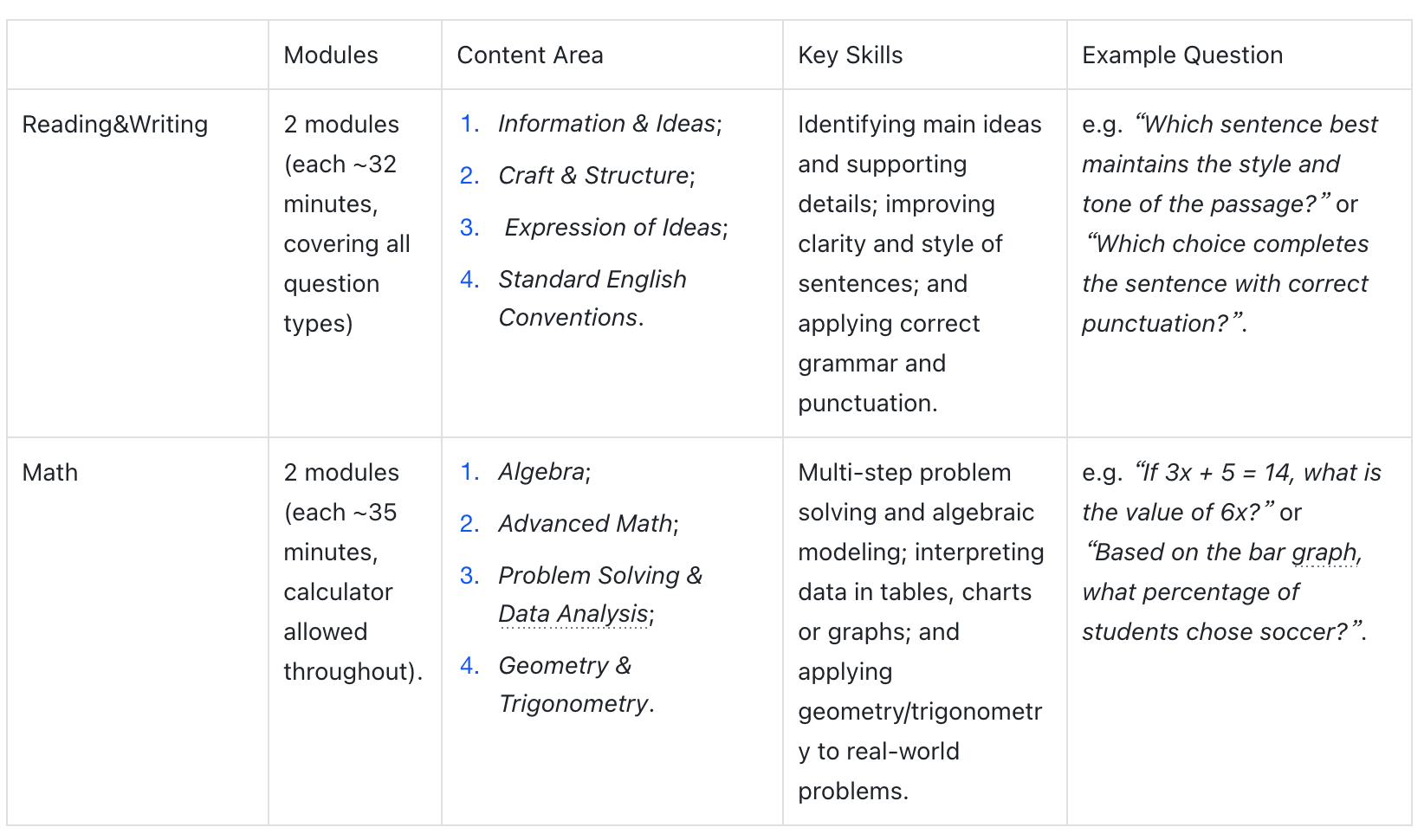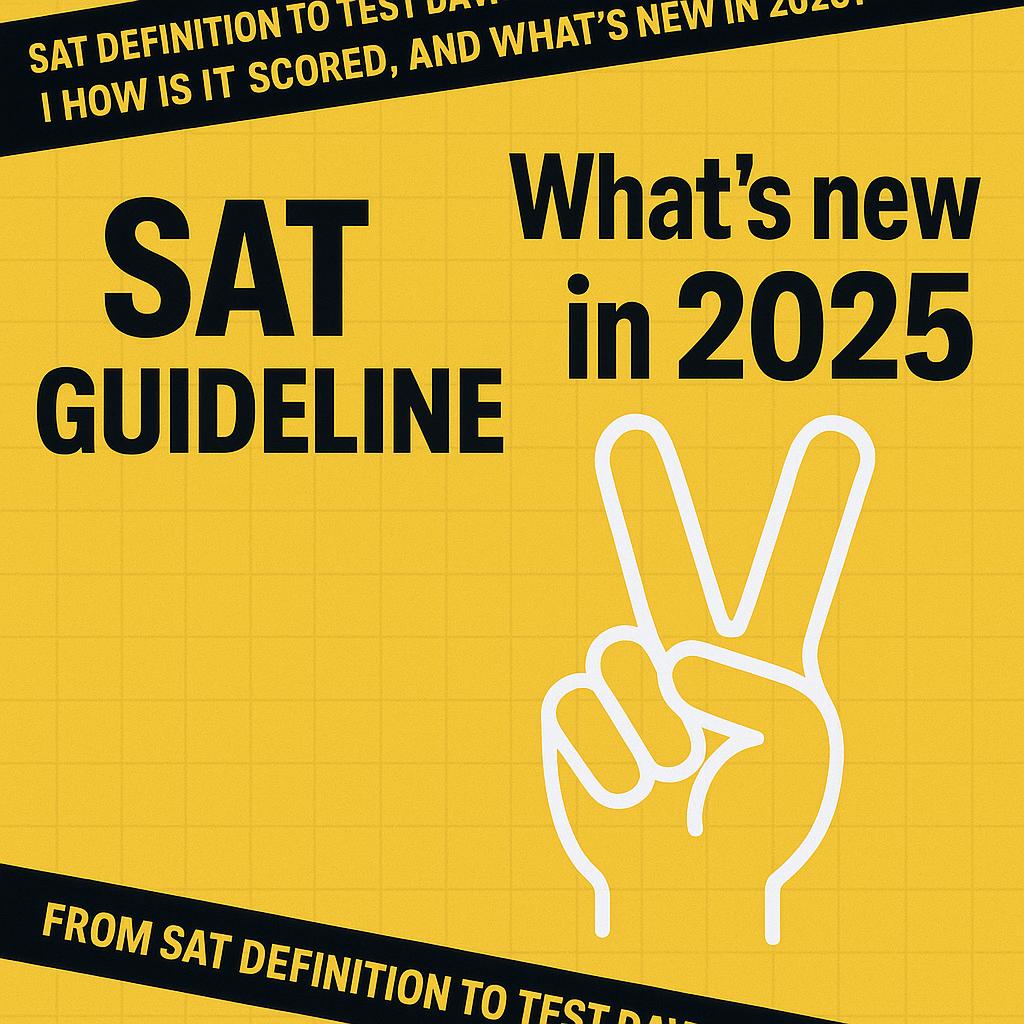The SAT.
You’ve probably heard those three letters whispered in school hallways, mentioned by counselors, or seen them pop up during late-night college research sessions.
If you’re wondering, "SAT, what is it, really?" or trying to get a clear SAT definition, you're in the right place. For decades, the SAT has been a key part of the college admissions process, and while it has evolved—most notably into a fully digital format—its core purpose remains: to help you showcase your readiness for college-level work.
This guide will unpack everything you need to know about the modern, Digital SAT. It'll probably take 10 minutes to read.
1.The Digital SAT Experience: What "Taking the SAT" Looks Like Now
The Shift to Digital: Why It Happened and What It Means for You
The SAT is now fully digital. This change makes the test much shorter than before and adjusts to each student's level. Students now take the test on a computer in a testing center or school.
So, what does this mean to you?
- A Shorter Test: The Digital SAT is significantly shorter than its paper test, clocking in at around 2 hours and 14 minutes, compared to over 3 hours.
- Adaptive Format: This is a big one! The test adapts to your performance level (more on this below).
- Built-in Tools: You'll have access to helpful tools right on the testing platform, like a graphing calculator for the entire math section, a highlighter, an answer eliminator, and the ability to flag questions for review.
2.Decoding the Content: What Skills Are Actually Being Tested? What the SAT Actually Measures?
Understanding the structure of the Digital SAT is the first step to feeling prepared.
- The Digital SAT consists of two main sections – Reading & Writing and Math – each with two modules.
- Each section (Reading & Writing, and Math) is divided into two "modules."
- Module 1: You'll start with a module containing a broad mix of questions (easy, medium, and hard).
- Module 2: Based on your performance in Module 1, the testing platform will deliver a second module that is either generally easier or generally harder. This adaptive routing ensures the questions you see are better targeted to your ability level, leading to a more precise final score.
Essentially, the Digital SAT personalizes the difficulty of the second half of each section based on how you did in the first half. It’s like the test is learning about you as you go!

1.Reading & Writing Section: Beyond the Main Idea
The Reading and Writing (RW) section of the Digital SAT is a unified assessment of your literacy skills. It’s not just about whether you can find the main idea; it delves deeper into how you understand, analyze, and use language effectively.
Fewer Skills Spotlight & Conceptual Examples:
- Critical Analysis: You'll need to do more than just understand what a text says; you'll need to evaluate how it says it and why.
- Evidence-Based Reasoning: Many questions will require you to identify the specific part of the text that supports your answer.
- Command of Grammar & Style: Precision in language is key.
2.Math Section: Problem-Solving in Action
The Math section of the Digital SAT evaluates your ability to apply mathematical concepts and use reasoning skills to solve problems. It’s designed to assess your preparedness for college-level mathematics courses and for quantitative reasoning in various academic disciplines.
Skills Spotlight & Conceptual Examples:
- Quantitative Reasoning: Understanding and working with numbers, ratios, proportions, and percentages in various contexts.
- Multi-Step Problem Solving: Many problems require you to break them down into smaller parts and execute several steps to arrive at the solution.
- Data Interpretation: Being able to read and understand information presented in graphs, tables, and charts is crucial.
3.Calculator Power!--Desmos Calculator Overview
You'll use the built-in Desmos graphing calculator for all Math questions on the digital SAT. This powerful tool helps you solve hard problems and draw graphs right on your screen. The calculator makes it easy to work with numbers and see data in different ways. You can focus more on solving problems instead of doing basic math in your head. For complete rules about calculator use, check the College Board Calculator Policy.
Part of your SAT Math strategy will be learning when to use the calculator and when to rely on your other mathematical skills.Effectively using Desmos can help you at least improve 200 points.
3.SAT Scoring Explained: Understanding Your Results (No More Mystery!)
You can earn between 200 and 800 points on each section, which adds up to a total score between 400 and 1600.
You'll get a detailed report after taking the SAT that shows many things about your performance. The report puts your scores into percentiles, which tell you how you did compared to other students. If you score in the 75th percentile, you did better than 75% of other test-takers. Many top colleges look for total scores of 1400 or higher, but different schools have different requirements.
Is a "Good" SAT Score?There's no magic number that defines a "good" SAT score because it’s highly dependent on your individual goals and the colleges you’re applying to.
- Research College Averages: Look up the average SAT scores of admitted students at the colleges on your list. This will give you a target range.
- Consider Scholarship Requirements: Some scholarships have minimum SAT score criteria.
- Personal Goals: Aim for a score that reflects your best abilities and makes you a competitive applicant for your desired programs.
4."Okay, I Get It! What Are My Very Next Steps?" – A Simple Action Plan
Understanding "SAT what is it?" is the foundational step. Now, let's talk about how to move forward:
Step 1: When Should I Start Thinking About SAT Prep?
There's no one-size-fits-all answer, but here’s a general guide:
- Sophomore Year (10th Grade): This is a great time to start exploring. Take the PSAT/NMSQT (usually offered in October) to get a feel for the types of questions and identify early strengths and weaknesses.
2. Junior Year (11th Grade):This is typically the prime SAT preparation and testing year for most students. You can dedicate more focused time to study and plan to take the SAT at least once, possibly twice.
3. How Long Does SAT Prep Take? This truly varies based on your starting score, target score, the intensity of your study plan, and your learning style. It could range from a few weeks of focused review for a student needing a small score bump to several months of consistent effort for those aiming for significant improvement.
These tips will help you:
• Pick clear goals for what you want to learn
• Study a little bit every day instead of cramming
• Use online tools to practice the digital SAT format
Step 2: Experience the Digital SAT Format (Low Pressure!)
The best way to reduce anxiety and understand the test is to experience it
- Download College Board’s Bluebook™ App: This free app is the official platform for taking the Digital SAT. It includes full-length adaptive practice tests. Get familiar with the interface, tools, and question types.
- AI-Powered First Look: "Curious about where you stand right now? Take a free, adaptive Digital SAT diagnostic on [Your AI Tool Name]. You'll get a realistic feel for the test environment and instant, detailed feedback on your baseline performance across all skill areas." [Link to Your AI Tool]
Step 3: Initial Prep Thoughts & Managing Early Nerves
- Familiarity Breeds Confidence: The more you interact with Digital SAT-style questions and practice tests, the less intimidating the actual exam will feel.
- Focus on Understanding, Then Speed: In your initial prep, concentrate on understanding the question types, the concepts being tested, and why correct answers are right (and incorrect ones are wrong). Speed will come with practice and mastery.
